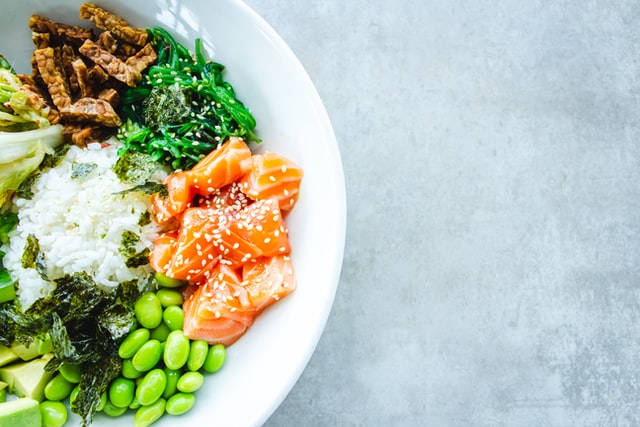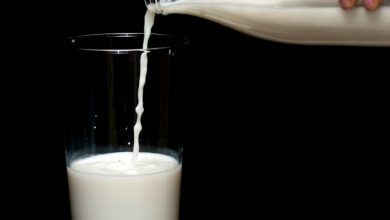
How Many Calories Should Lunch Be?
As we know, calorie consumption is directly related to your health and weight in a big way. Tracking and moderating your calories is an essential part of maintaining proper nutrition. Because calories should be proportioned over multiple meals throughout the day, it’s important to gain a good grasp of your ideal goal count. In this article, we’ll address lunch calories specifically and help you determine what the right amount is for your midday meal.
First, Identify Your Goals
Identifying the daily calorie consumption that’s right for you all begins with what your health and weight loss goals are. Are you seeking to maintain your current weight? Or do you have a weight loss number in mind? Are you currently on a fitness plan? On average, women require between 1,600 to 2,400 calories per day, and men rest slightly higher at 2,000 to 3,000 calories. To more closely determine where your personal daily calorie consumption lies, try using a calorie calculator.
Planning Out Your Lunch Caloric Intake
Once you know your daily calorie intake goals, you can delegate a portion of calories to be consumed with each meal. According to experts, breakfast should contain the most calories each day. Studies conducted on breakfast consumption showed that those seeking to lose weight or who had diabetes saw the most success in maintaining their health and losing weight when they had healthy breakfasts packed with protein.
Further studies have shown that essentially starting the day off with more calories and gradually working your way down seems to do the trick for weight loss. In the 12-week study that followed obese female volunteers, it was shown that the women who began the day by consuming 50 percent of their allotted calories, followed by a healthy lunch of 36 percent of their daily calories, and ending the day with a small dinner consisting of 14 percent of their calories lost the most weight.
In keeping all of this in mind, let’s say you’ve determined that your goal daily caloric intake is 1,500 calories. You might divide your meals up in the following way:
- Breakfast (50 percent): 750 calories
- Lunch (36 percent): 540 calories
- Dinner (14 percent): 210 calories
Notice that lunch sits comfortably in the middle. Now, if you are wondering how to consume a satisfying lunch while not exceeding a smaller calorie count, keep reading – it’s easier than you think.

Calorie-Cutting Lunch Ideas
Eating well is all about balance and give and take, especially when it comes to staying on track with your calories. If you’re feeling frustrated while looking at the lunch menu, don’t worry. Take a look at these calorie-cutting substitutions and steps you can make to stay full and stay on track:
- Stick With Water – Juices, sodas, and teas can be loaded with sugar. Consuming sweet beverages with your meal can dramatically increase your calorie intake before you’ve ever eaten anything. For best results, consider sticking with water or unsweetened tea.
- Skip the Sauce – Your favorite sauces are probably adding a lot of unnecessary calories to your meal. Try reducing or eliminating ketchup, mayonnaise, and other condiments and sauces with your meal.
- Swap in Veggies – Vegetables are fantastic in that you can up your consumption of them to feel full, while also reducing your calories by avoiding other foods. As a bonus, vegetables are packed with vitamins and minerals.
- Eat Off a Salad Plate – It has been shown that, by consciously using smaller plates, you can essentially trick your mind into thinking it’s fuller sooner.
- Stay Thin When You Eat Pizza – Even if you are craving a delicious thick-crust pizza, you can opt for thin-crust instead to minimize your calorie intake.
- Slow Down – By slowing down between bites and with your chewing, you might be able to help yourself feel more full sooner.
- Don’t Eat the Rolls – Opting to skip eating bread or rolls served with your lunch can go a long way towards reducing your caloric intake.
- Up Your Water Intake – If you drink water before your meal, it can help you feel full quicker.
- Increase Your Protein – Protein is notoriously helpful in allowing you to feel satisfied with fewer calories.
- Watch Nutrition Labels – You might be surprised at just how many calories or grams of fat are in your favorite foods. By taking a second to read nutrition labels, you can gain some insight into making better decisions with your lunch choices.
- Do Not Go For Seconds – We are all guilty of indulging in second helpings from time-to-time. Unfortunately, this can quickly pile on the calories, so it is probably best to skip this.
- Sleep – Studies have shown that those who are well-rested tend to eat better and sustain on fewer calories.
- Do Not Order Cream Sauces – Cream-based sauces tend to be higher in fat and calories. When making your meal selection, try choosing tomato sauces instead if it is an option.
- Stay Small with Desserts – If dessert is what you crave, try ordering small or sharing with someone to reduce portion amounts and calories.
- Go Skinless – While many enjoy the skin on things like chicken breast, it’s actually where a chunk of calories lie. Try skipping the skin to cut calories.

When the Lunch Calories Just Don’t Cut It
Sometimes distributing calorie consumption accordingly throughout the day just does not work. For those of us with busy schedules or who just do not have interest in scheduling meals this way there are other ways to manage your weight.
Going back to basics, eating a balanced diet, and exercising regularly are extremely helpful in maintaining your weight. You can still see success with weight management by mixing up your food choices between the food groups and tracking calories throughout the day. Consider using a smartphone calorie tracking app to help you keep track of calories as you consume them. Some apps to consider are:
- My Fitness Pal (iOS and Android)
- Fitbit (iOS and Android)
- Lose It! (iOS and Android)
- Healthy Out (iOS)
- SparkPeople (iOS and Android)



